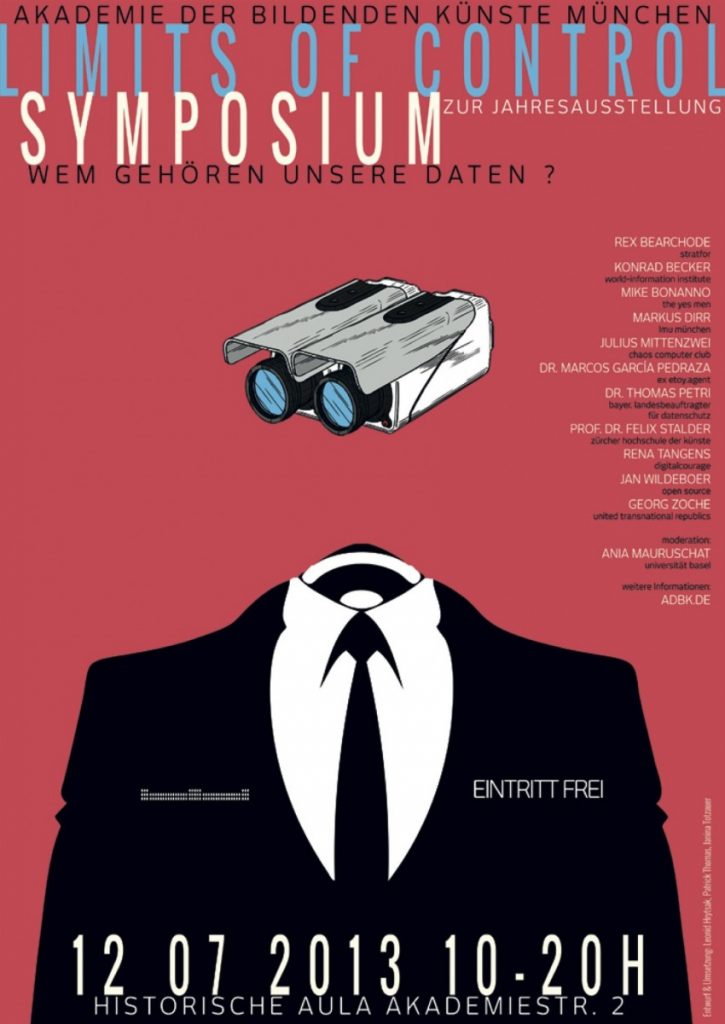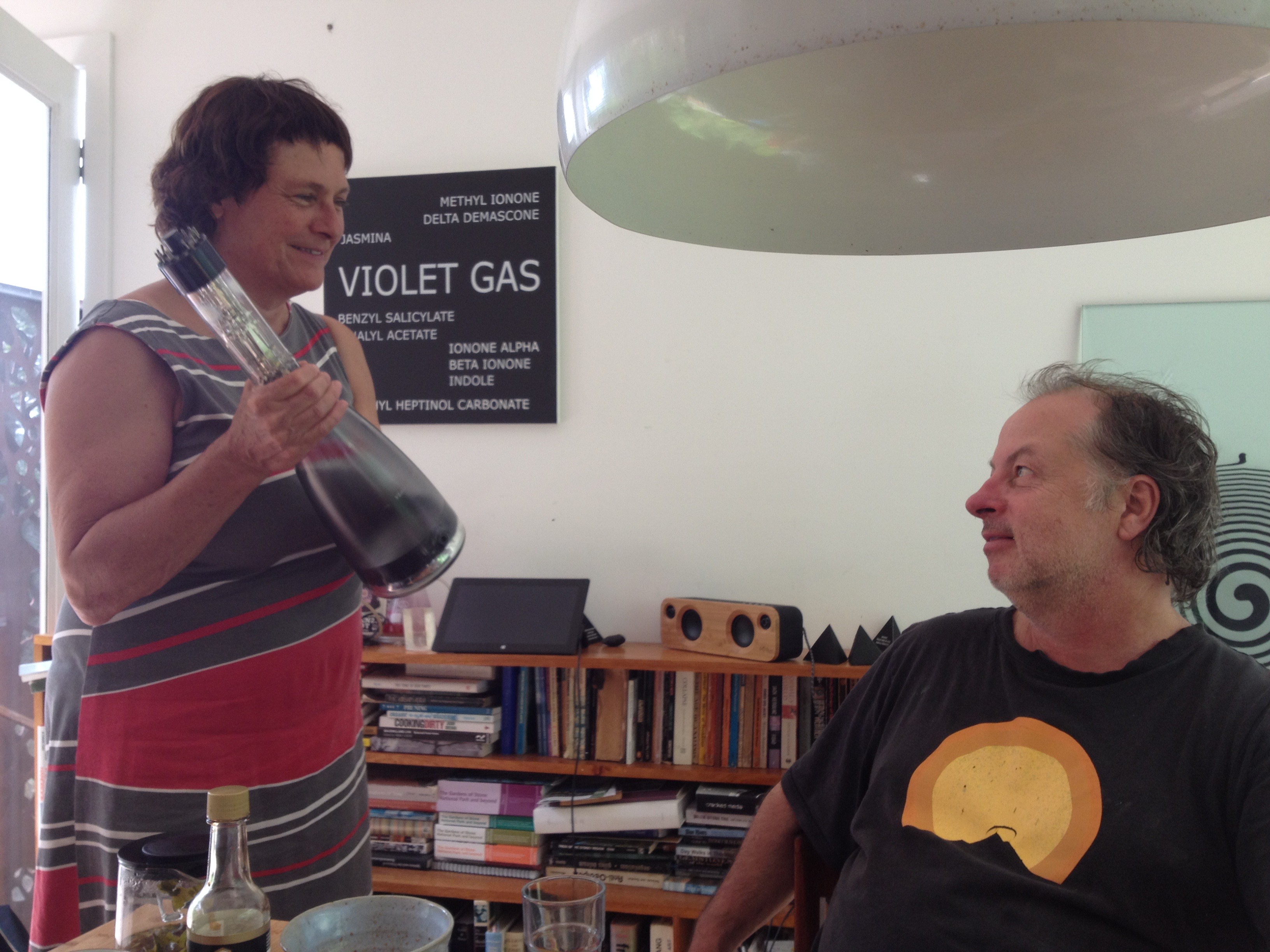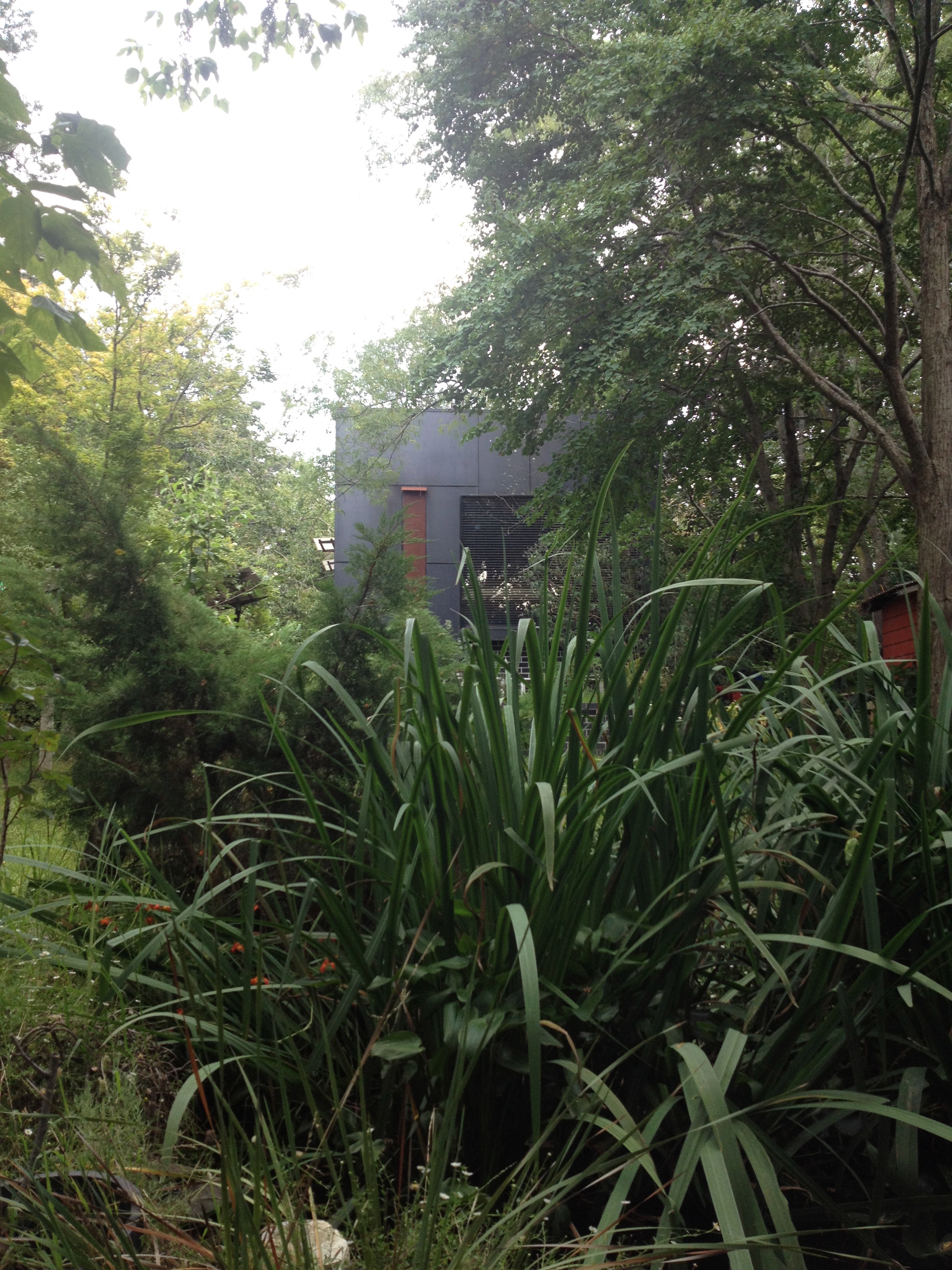Archiv der Kategorie: Presentations & Talks
Bechdel-Test for Radio Play
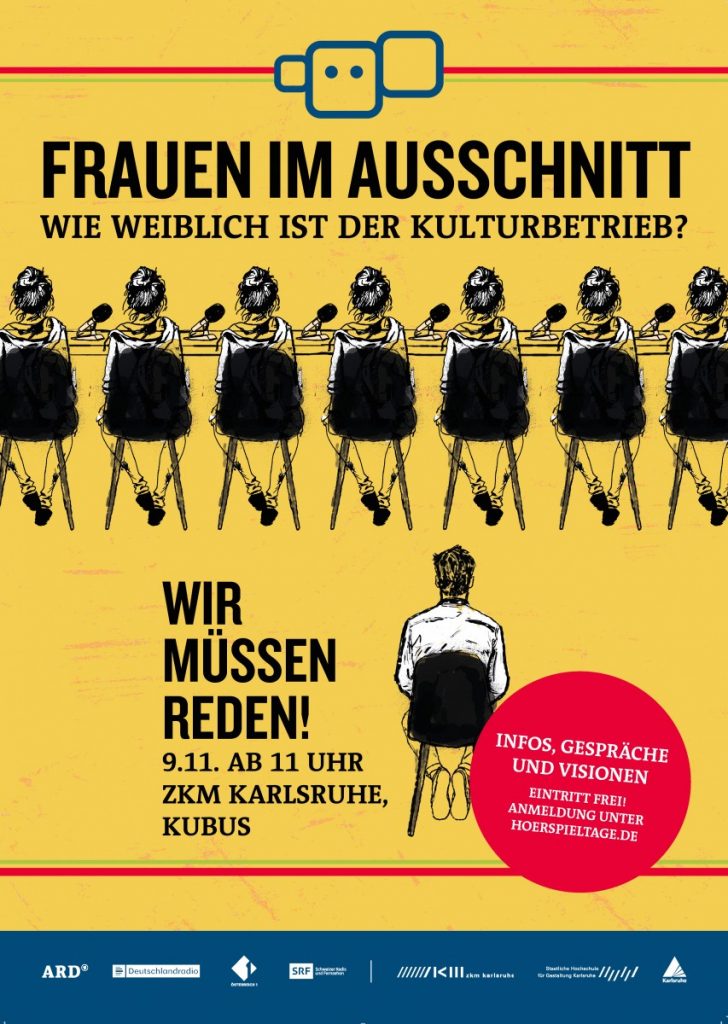
On Nov. 9th at the ARD Hörspieltage in Karlsruhe (GER) I gave a lecture on the Bechdel Test with a special focus on radio plays and about the limitations of the Bechdel test . My presentation was the start of a special theme day looking at the situation of women in cultural institutions two years after the kick-off of the #MeToo movement. After the presentation I participated in a panel discussion with Sabine Hark, Lamya Kaddor, Stefanie Lohaus, Luise F. Pusch und Hilde Weeg. This discussion led to three workshops, which resulted in the „Karlsruher Postulate“ – our demands and commitments how to bring real gender equality along – eventually. For documentation of the special theme day in German see here.
Energies & the Arts
Visiting Joyce Hinterding & David Haines in the Blue Mountains (NSW), Australia
“Like linguists turn to coding, silversmiths turn to electronics”, says David Haines. For the Australian artists it seems to be the most natural thing in the world to artistically transcend materials, media and genres. Haines, who just has been awarded the 2017 Australia Council Visual Arts Fellowship for two years, to delve further into his “abiding interest in aroma as an art form” and develop a substantial exhibition across the range of his practices, is one half of the intriguing Australian art couple Haines & Hinterding. The other half is Joyce Hinterding, a former silversmith and nowadays an artistic expert on energies, especially on Very Low Frequency Radio Waves and Natural Radio.
During my research stay in Australia Douglas Kahn was so kind and generous to introduce me to his dear friends and neighbours Joyce and David. The couple invited me to visit them at their lovely home in the bush of the Blue Mountains to learn more about their art practices – an unexpected, spontaneous visit, which turned out to be one of the highlights of my research trip down under. After a nice spring roll lunch and some conversation we wanted to go and see some kangaroos together. However, I quickly became so fascinated by the multisensory artistic cosmos of Haines & Hinterding and our conversation lasted so long that the kangaroo visit had to be postponed.
What makes the works of Haines & Hinterding so fascinating to me is the fact that they are outstanding examples of artistic research.
Cross-currents: Gender and Transnational Broadcasting
Report about transnational workshop at Bournemouth University, Centre for Media History, July 6 – 7, 2017
When I presented my PhD project “Radiophonics, Noise and Understanding” at the fist workshop of the Australian-German “Transnational Media Histories” collaboration[1] at the Centre for Media History at Macquarie University, in Sydney in February 2017, Dr Jeannine Baker asked me if I would like to join a workshop, which she and her colleague Dr Justine Lloyd were planning together with the British radio scholar Dr Kate Murphy for July in Bournemouth, UK. Its topic: Gender and transnational broadcasting. I asked her, if gender would refer exclusively to female aspects of broadcasting or if I also would be allowed to discuss the topic of my PhD about noise and radio art from a male and masculinity studies perspective. Jeannine liked the idea and so I got invited to participate in, and to present at, a very fruitful and inspiring international, two-day workshop at the Centre for Media History at Bournemouth University.
Weiterlesen„Translating (as) Infinite Jest“
Reading & Workshop with Ulrich Blumenbach
The novel Infinite Jest by David Foster Wallace (1962 – 2008) was published in 1996 and is regarded as a masterpiece of US-American literature. Like no other writer of his generation David Foster Wallace knew the Oxford English Dictionary by heart, was highly educated and could mimic various linguistic styles perfectly. Thus his book became not only an encyclopedic novel with 388 endnotes, some of which stretching themselves even over pages. The novel also displays a huge arsenal of figures, each of them speaking more or less in a unique way.
Lecture „Catastrophes and the Noises of Radio Art in the Digital Age“
On Tuesday, the 17th of May I will present the current state of my dissertation project at the Research Colloquium of the English Seminar at University of Basel. I am very much looking forward to this event.
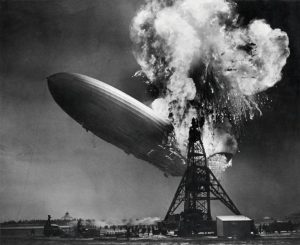
Crashing of the airship LZ 129 Hindenburg on the 6th of May 1937 in Lakehurst, New Jersey (USA). Herbert Morrison’s radio report about the catastrophe is one of the oldest documents of radio history. Foto credit: Sam Shere
This is what my talk will be about:
„The antagonism between the technological development towards perfectly clean digital radio sound and the common idea of radio as a noisy analogue medium is crucial for contemporary radio research. From a literary and media studies perspective this antagonism can be scrutinized very well in the extensive corpus of over 40 radio plays by the German radio artist Andreas Ammer. Especially three of his works, which he created together with the German noise musician FM Einheit, are examined thoroughly within my PhD project. These plays are “Apocalypse Live” (1994), “Deutsche Krieger I – III” (1995/1997) and “Crashing Aeroplanes” (2001). All three of them broach the issue of “the noises of radio art in the digital age” by the means of catastrophic plots.
Limits of Control
